#Protect Florida wildlife
Explore tagged Tumblr posts
Text
Hey Guys, I need a big favor. it’s been brought to my attention that folks are trying to put resort style HOTELS, pickleball courts, and golf courses on the land of several Florida State Parks.
Even if you are not a Florida citizen, most people can connect with the fact that state parks are meant to connect you to nature. They’re not meant to be the home of resorts and golf courses, they are meant to be the home of wildlife.
I’m not good with words, and frankly I rarely intervene with things like this, but this hits hard. My best memories have been in our state parks. I’ve had picnics and enjoyed long walks in the wide open fields that some parks have.
If you are able, I BEG you, please sign this petition and email our governor Ron DeSantis in favor Against this.
They may only be doing small parks now, but if they’re okay with this, it won’t be long before they start targeting more well-known parks. I don’t know if this is normal in other states but it’s is Not Normal in Florida and I refuse to let it ever be. Thank you for everyone’s support and please reblog this to reach more people.
#floridian#florida#florida state parks#Protect state parks#Protect Florida wildlife#Protect Florida#state park#sign this petition#king sock#i need your help#for you#please help
6 notes
·
View notes
Text

Keep your grubby hands off of our state parks‼️
#Protect Florida wildlife#keep florida wild#keep fl state parks wild#florida wildlife#old Florida#florida state parks#5801 print#support Florida state parks#save florida wildlife#save Florida state parks#the real florida#wildlife conservation#Florida wildlife conservation#Florida conservation#protect wildlife#protect wild lands#rustic florida#florida grown#florida life#florida#Florida living#Florida girl#save it don’t pave it#wild Florida
2 notes
·
View notes
Text
" Sassy Tank boop 🐆" // © Samantha Faircloth
© Original Audio
#Florida#United States#nature#Conservation#Wildlife#Big Cats#Leopard#Endangered#Protection#reels#photography#aesthetics#wanderlust#explore#follow#discover
174 notes
·
View notes
Text
Gators
So we didn't go for a swamp walk but took a hike instead! But we still saw a lot of gators! Here are some photos of the silly guys!





#adiraofthetals is showing their florida man vibes#alligator#florida gators#gator#gators#wildlife#my photos#wildlife photography#wildlife pictures#wildlife protection#wildlife park#wildlife preservation
2 notes
·
View notes
Text
"Florida is hell on earth" sounds like a you problem
#does florida have some really bad traits? yeah obviously#the tourists the traffic the politics#but i can't fuck with people painting with a broad brush because there's so many wonderful things about florida#the everglades the beaches the wildlife#like you can't possibly tell me there's nothing good in flroida when the everglades exist#she provides 8 million people with drinking water. she has eight separate habitats.#she protects and houses many critically endangered species like the florida panther the american alligator egrets#even the ghost orchid#if you really think florida is nothing but a hellhole you lack the ability to see beauty all around you#and lack of understanding in how important a part nature plays#it's not perfect but it's home#like how can you look at a manatee and say that florida's nothing but a hellhole?#maybe if you visited blue springs park to watch the manatees you'd calm down#or take a glass bottom boat ride at wakulla springs or go tubing down the ichetucknee#go look at some birds and alligators and frogs#go collect sharks teeth off the beaches in the gulf#florida has a truly beautiful and unique ecosystem and i feel bad for people who can't appreciate it#oscar talks to himself
14 notes
·
View notes
Photo

Warning: 2nd pic is graphic I’ve been back & forth on posting about this for a while now, but it’s important to be realistic when portraying wildlife conservation. Not every nature post is going to be a happy one. These two animals were victims of human negligence within days of each other. The first is a kingfisher that was entangled in discarded fishing line. It was found hanging in a tree by some good-hearted locals who stuck by it until I could come help them get it down - then it was handed off to @br.ittany3515 and eventually delivered to @conservancyswf The gopher tortoise was hit by a car in the middle of the afternoon, in between a “Tortoise crossing” sign and a 20mph school zone. There’s no way the person who hit this protected animal did it accidentally. Again, I handed it off to @br.ittany3515 to be taken to @conservancyswf As far as I know the kingfisher is recovering. The tortoise died. There is no reason for either of these victims to have suffered at all. I don’t care where you’re from or how long you’ve been coming here - EVERYONE is responsible and accountable for the wildlife here. Many thanks to the people who saw these animals in trouble and did what was necessary to help. If you see an animal in distress please act. Call the authorities and do what you can until help arrives. If you claim to love Florida, protect it from those who won’t. #wildlife #conservation #florida #marcoisland #act #doyourpart #protect #nature #PLEASE (at Marco Island, Florida) https://www.instagram.com/p/CpWSSXpDDFV/?igshid=NGJjMDIxMWI=
4 notes
·
View notes
Text
Common Mistakes to Avoid When Kayaking in Naples
Kayaking in Naples, Florida is a fun-filled activity where every participant is guaranteed to enjoy the gorgeous views of the… environment including the sprawling mangroves and the wildlife therein as well as the coast. Unfortunately, whether you are a novice or a pro paddler, some errors can easily turn your seemingly tranquil paddling day into a hard one. Therefore, to help you make the most of your kayaking experience in Naples, it is important to consider the following common kayaking errors and their avoidance.
1. Ignoring the Importance of Weather and Tides
The heading out is usually one of the worst mistakes that most kayakers make without taking into consideration the weather and tidal area conditions. One thing for sure is that the weather in Florida particularly the kayakers will be heading to is very fickle and so are the tides. Sufficiently strong tides or even a sudden rainfall storm can render impossible the act of paddling – worse still, may turn out to be very risky
Solution: Before you head out, check local weather forecasts and tide charts. For example, very accurate tide prediction for Naples is available on many apps and websites, for example, NOAA. If you are a novice in kayaking, perhaps it would help to slow down your adventurous spirit and commence all serious excursions when the weather is fine and there is slack tide.
2. Going For The Wrong Kayak
Water environments will not suit all types of kayaks. This might affect your safety and comfort while using the kayak as well as the enjoyment of the water activity. For example, a narrow touring kayak might be hard to use for proper balancing for a beginner while an outing sit on top kayak that is very common for such instances might be a shorter and easier trip.
Solution: Calm and flat-water conditions like those available in the estuaries and bays in Naples call for sit on top or recreational kayaks which are mostly ideal offering stability and ease of use. Some such as Mike’s Coastal Expeditions have variations for different purposes that even offer clear kayaks for varied underwater views. To avoid unnecessary struggle as well as to be able to enjoy the paddle better it is advisable to always select the appropriate kayak according to one’s skill level and intended course.
3. Underestimating Food and Water Supplies
Even more so in the state of Florida, kayaking can be very strenuous. Many participants do not realize how much physical exertion it will require, leading them to tiredness and lack of water.
Solution: In any case, cause a lot of water and a few carrying light snacks filled with energy. With such measures taken, it is not problem to sustain the energy levels and keep hydrated with a refillable water bottle and some trail mix or energy bars. It might be a good idea to place your supplies within a dry bag as that will protect them from water raveling and make it easy to reach out to during the rests.
4. Underestimating the Importance of Safety Equipment and Life Jackets
If there is one mistake people make that can have grave consequences is that they tend not to put on life jackets. Most weather-related accidents occur to individuals who are good swimmers.
Solution: A life jacket is always put on before engaging in any activity that involves being on or in the water, regardless of how good a swimmer one is. In most cases, rental providers will provide life jackets and can fit them to the customer appropriately. It can also be useful to keep a whistle, a waterproof phone case, and a first-aid kit inside the kayak for added safety.
5. Thinking You’re More Skilled Than You Really Are
Kayaking is more demanding than most people think, particularly when one is not used to the area and the weather. The problem is that one usually tends to overestimate his or her ability and ends up struggling against the currents, wind, or over long distances and becomes tired and helpless.
Solution: If you are a novice in kayaking and are willing to embark yourself on such a sport, it is suitable to begin with less demanding routes. If you really want to go to the sport in a heart, book a kayaking guided tour in Naples, such as Mike’s Coastal Expeditions. These types of experiences offer comfort and protection while allowing you to practice and enhance your kayaking abilities in unfamiliar waters.
6. Disregarding the Protection of Animals and the Habitat
Lake Worth had numerous ecosystems including mangroves. The water body also harbours other life like manatees, dolphins, and countless varieties of birds. Common errors include approaching creatures rather than appreciating them from a distance and leaving litter which can affect such fragile systems.
Solution: Refrain from getting too close to the animals and making any sound that could startle them. A small pouch would help to dispose of used materials without littering. Environmental consideration is one of the aspects that the Nafcfalahs attention to when offering eco-friendly activities, and as such, they give tips on ways to conserve the beauty of Naples for future generations while having fun.
7. Sun Protection – Missing in Action
The sun in Florida can be too much for any human being especially on water where light is bouncing off the water surface. You can easily get sunburnt or experience heat waves if precautions are not taken and this could lead to an enjoyable or a dangerous situation.
Solution: Apply sunscreen, wear a cap and protective UV clothing. There are also recommendations of using polarized lenses whilst exposed to the waters as they help in seeing clearly without exposing eyes to the harmful rays of the sun even without the glasses on. If you expect long stretches of exposure to the sun, a long-sleeve rash guard will come in handy as it helps to shield you from the sun without toppling the heat levels.
8. Route Disregard
Failing to research the water can result in getting lost or distressed while paddling, an unproductive use of time and energy. This error is often found in coastal regions with an intricate web of inlets and bays, such as mangrove tunnels.
Solution: Do not forget to plan your return in the same way. Prepare a route and inform somebody about it. You can find that most kayak rental outlets have ready maps for these routes or even GPS devices for hire. If you don’t want stress, there’s always a guided tour where you have a map already and all you have to do is take in the beautiful view without the hassle of any behavioral navigation.
Get Ready to Explore?
Kayaking in Naples is enjoyable and safe as long as these worst-case scenarios are avoided. Wherever you look, you see the blue skies, water, attractive shores and plenty of flora and fauna – Who would not enjoy kayaking, even for the beginners? If you do things like prior preparation, environment conservation and most importantly, having the right equipment, you will certainly enjoy the beauty of Naples, California from the water. Be it a first-time kayaking experience for you, or your friends, or even a family member, these recommendations will minimize the potential for unwanted outcomes and contribute to the success of the activity.








#Common kayaking mistakes#Kayaking in Naples#Kayak safety tips#Beginner kayaking tips#Kayak rental Naples#Kayaking safety gear#Naples kayak tours#Avoiding kayaking mistakes#Naples wildlife kayaking#Kayak route planning#Kayak in Florida#Kayak life jacket#Guided kayak tours Naples#Choosing the right kayak#Kayaking sun protection
1 note
·
View note
Text
The Sherman’s Fox Squirrel is a Very Interesting Species
Sherman’s Fox Squirrel Friday evening, as I was headed home from work, I stopped to take some photos of a couple of the many, many wildflowers that are blooming right now. While shooting flowers, I happened to look across the road to see this fellow watching me. Needless to say, I completely forgot about the flowers and trained my camera on him. He continued to watch me for a few more seconds…
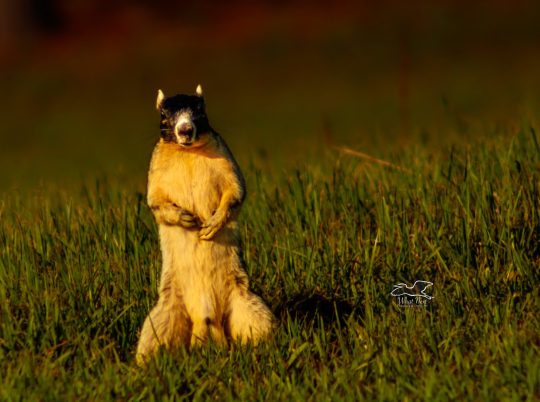
View On WordPress
#Florida fox squirrels#Florida mammals#Florida squirrels#Florida wildlife#fox squirrel photographs#fox squirrels#mammals#protected mammals#protected species#Sherman’s fox squirrel#southern fox squirrel#squirrel photographs#squirrel photography#squirrels#wildlife#wildlife photographs#wildlife photography
0 notes
Text
GUYS YOU ARENT GONNA BELIEVE

I SAW THESE SANDHILL CRANES TODAY

They only visit the neighborhood some days and it's been so long since I've seen them, this made me so happy 🥺
#birds nature#birds of north america#birdsphotography#sandhill crane#cranes#florida birds#wild birds#birds#protect sandhill cranes#protect wildlife#protect birds
0 notes
Text






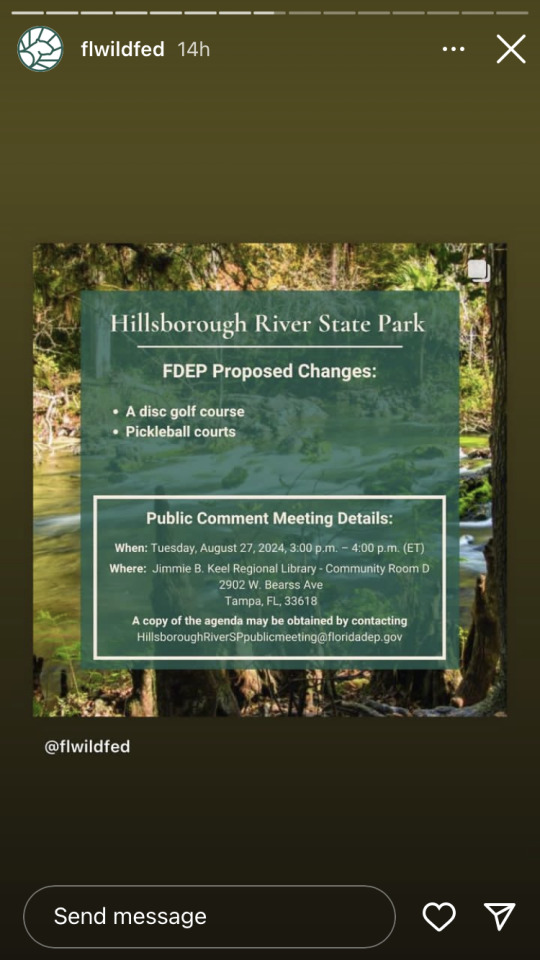



The Florida Department of Environmental Protection (FDEP) announced an initiative yesterday proposing major changes to various State Parks throughout Florida.
Today, with only one week's notice, FDEP announced public meetings throughout the state scheduled for 3 p.m. on Tuesday, August 27th. The meetings will consist of a presentation and an opportunity for public comment, but with only an hour allotted, they do not appear to include a question-and-answer period.
To voice your concerns about these proposals and the lack of public participation, send your customizable email to the Governor, the Secretary of FDEP, and your state representatives. Adding your connection to Florida's State Parks in the email can help them understand how important this issue is to you, their constituent.
if you are able to make it to one of these, i strongly recommend you do. otherwise please send a message. we dont need fucking golf and pickleball in our already threatened natural areas
#Florida#Florida wildlife protection#i hate ron desantis so much#please if you live in Florida consider signing
6K notes
·
View notes
Text
Good News - May 15-21
Like these weekly compilations? Support me on Ko-fi! Also, if you tip me on Ko-fi, at the end of the month I'll send you a link to all of the articles I found but didn't use each week - almost double the content!
1. Translocation of 2,000 rhinos in Africa gets underway in “one of the most audacious conservation efforts of modern times”
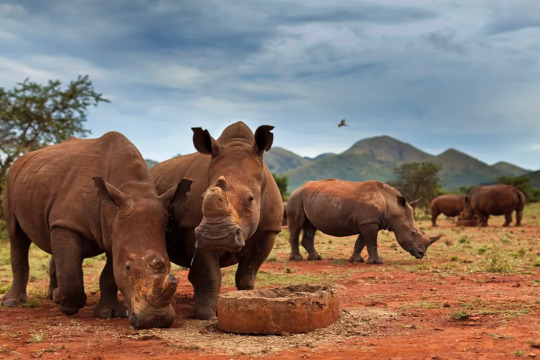
“The 2,000 rhinos - more than are currently found in any single wild location in Africa - represent around 12-15% of the continent’s remaining white rhino population. […] “Rhinos perform an important ecological function in the environment as a large grazing herbivore,” says Dale Wepener[….] “The protection of rhino is far more than just looking after rhino; other species that occur in the protected areas will benefit from the protection,” explains Jooste. “This will lead to an increase in diversity and result in much healthier ecosystems.”
2. Florida Corridor Buffers Effects of Climate Change on Wildlife — And People
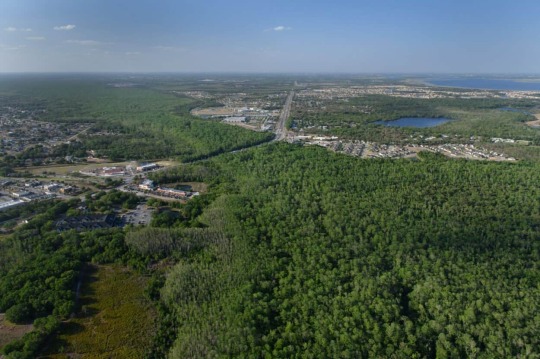
“A massive multi-partner effort that has conserved 10 million acres for wildlife in Florida over past decades will help buffer wildlife—and people—from the effects of climate change, a new report says. […] Protecting these corridors is important for wildlife genetics, demography and connectivity […], conducting prescribed fires in the corridor can reduce the risk of more intense wildfires [… and] they can provide buffers against hurricanes and seasonal thunderstorms.”
3. Global life expectancy to increase by nearly 5 years by 2050 despite geopolitical, metabolic, and environmental threats
“Increases are expected to be largest in countries where life expectancy is lower, contributing to a convergence of increased life expectancy across geographies. The trend is largely driven by public health measures that have prevented and improved survival rates from cardiovascular diseases, COVID-19, and a range of communicable, maternal, neonatal, and nutritional diseases (CMNNs).”
4. Valencia has Spain’s longest urban park
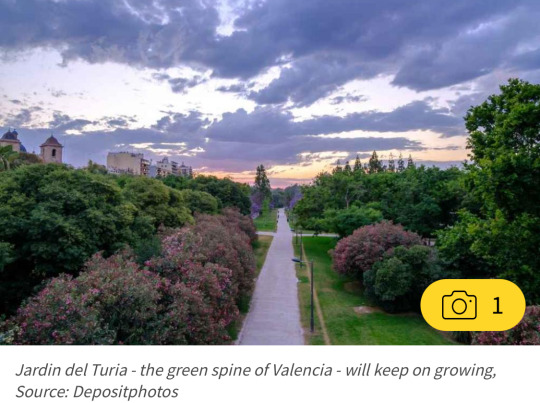
“Jardin del Turia (Turia Garden) is the green spine of the City of Valencia and Spain’s (and possibly Europe’s) longest urban park stretching for a length of 8.5 kilometres [… and] the current administration plans to make Jardin del Turia Europe’s largest city green space by extending it to the sea[….] Almost all Valencia residents (97 per cent) live within 300 metres of an urban green space. […] Jardin del Turia is a true urban oasis that provides exceptional thermal comfort, with a temperature difference of up to three degrees compared to other areas of the city.”
5. This Paint Could Clean Both Itself and the Air
“When an artificial ultraviolet light source shines on [photocatalytic] paint, the nanoparticles react with pollutants to make them break down—theoretically removing them from the nearby air and preventing a discoloring buildup. [… R]esearchers developed a new photocatalytic paint that they claim works using UV rays from ordinary sunlight, making its self-cleaning properties easier to activate. They’ve also shown that they can effectively produce this paint from recycled materials [including fallen leaves].”
6. Planting Seedlings for a Cooler Rockingham
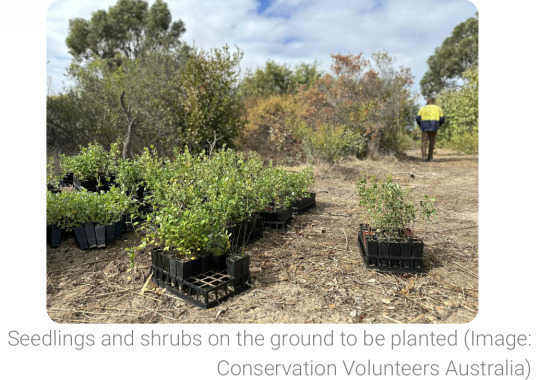
“A dedicated group of volunteers recently planted over a thousand native seedlings in Lewington Reserve [… and] re-established canopy cover to areas of the reserve to create cooling shade for the local community and provide homes for native wildlife. […] Planting lots of trees and shrubs in urban areas can help create shade and cool cities, mitigating the impacts of climate change, contributing to biodiversity conservation and building greener, more resilient communities.”
7. Sydney’s first dedicated affordable housing for trans women designed to deliver ‘positive outcomes’

“Community housing provider and charity Common Equity NSW, […] which is for people on very low to moderate incomes, prides itself on creating inclusive living and promotes the independence and well-being of people and communities […, and] will deliver the first-of-its-kind social housing in a bid to provide a safe place to live for transgender women seeking an affordable home.”
8. Rewilding: How a herd of bison reintroduced to Romania is helping ‘supercharge’ carbon removal
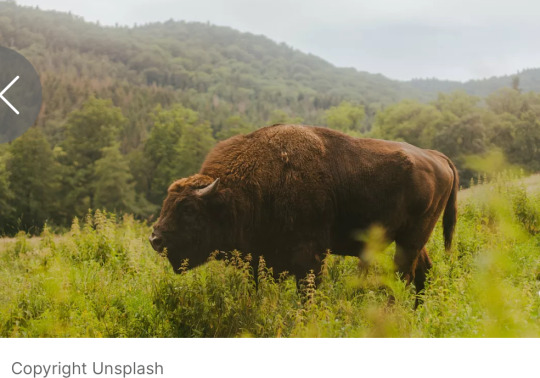
“170 European Bison reintroduced to Romania’s Țarcu mountains could help capture and store the carbon released by up to 84,000 average US petrol cars each year. […] By grazing a 48 square kilometre area of grassland in a wider landscape of 300 kilometres squared, they helped to capture an additional 54,000 tonnes of carbon each year. That is around 10 times the amount that would be captured by the ecosystem without the bison.”
9. World’s biggest grids could be powered by renewables, with little or no storage
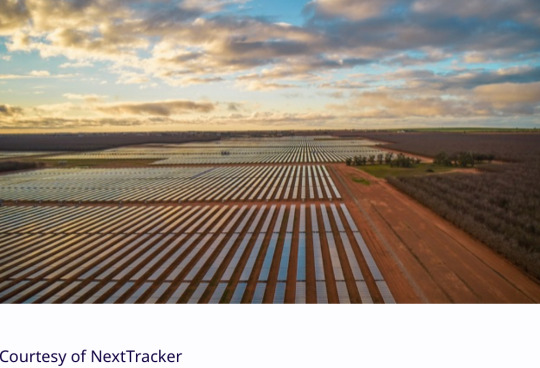
“[…] 100% renewable supply can then match the load by putting surplus electricity into two kinds of distributed storage worth that [an energy expert] says are worth buying anyway – ice-storage air-conditioning and smart bidirectional charging of electric cars, and recover that energy when needed, filling the last gaps with unobtrusively flexible demand.”
10. Supporting the Long-Term Survival of Copper River Salmon and Alaska Native Traditions
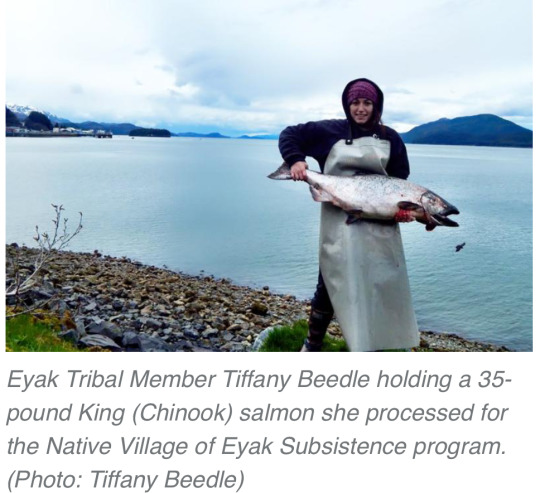
“With $4.3 million in NOAA funds, the Copper River Watershed Project and The Eyak Corporation will remove fish passage barriers, opening more streams for salmon spawning and subsistence fishing. [… As part of this effort, o]ld narrow culverts that constrict water flow will be replaced with “stream simulation” culverts wide enough to fit the full stream, including its banks. They are also deep to allow contractors to place stones and other material inside to mimic a natural stream bottom.”
May 8-14 news here | (all credit for images and written material can be found at the source linked; I don’t claim credit for anything but curating.)
#hopepunk#good news#rhino#white rhino#africa#conservation#rewilding#climate change#florida#wildlife#life expectancy#health#spain#green space#urban parks#recycling#trees#global warming#trans#affordable housing#australia#bison#romania#carbon#carbon capture#renewableenergy#reforestation#salmon#alaska native#nature
390 notes
·
View notes
Text
Also, the point I always make: Jurassic Park is all about "PLAYING GOD!!!1!!1!!" because of cloning dinosaurs, and then sequels are all about "we must save the poor dinosaurs!" while canonically taking place in large islands off the coast of Costa Rica. Those islands, or at least the inspiration for them, actually exist, though much smaller.
And you know what they are? They are strictly protected reserves, because of their unique ecology and endemic species. In fact, one of the main worries is precisely the introduction of invasive species.
Could you imagine if instead of Isla Nublar, Jurassic Park was set in say, the Galápagos Islands? Could you imagine someone in real life trying to build Disneyland in the Galápagos or the Great Barrier Reef?
I know that joke that Jurassic Park is about "capitalism gone wrong" but it's even more fucked up if you think about the imperialist part too. A first world billionarie tycoon comes to a third world country, somehow achieves control of islands (it's implied that the Costa Rican military is at Jurassic Park's call; fun fact, Costa Rica has no military) which by all means should be protected as fragile ecosystems, to build a gigantic theme park with all the ecological disruption it implies, for first world tourists too. The theme park just so happens to be cloned dinosaurs, but Hammond might as well have razed the whole island and planted soybean fields and it would be the same horror story we in South America are very well acquainted with.
And then the sequels are about "saving the dinosaurs!" like they're a natural part of the ecosystem! No man, fuck the dinosaurs, they're giant walking GMOs in the most literal way possible. Hammond SHOULD have built it in Orlando, at least Florida (which has its own deep ecological troubles) is large enough so you can actually set preserved areas, wildlife corridors, better ecological practices... building a park in Isla Nublar is the same as destroying the Galápagos.
And no, the movies don't adress this fact, that Isla Nublar and etc. HAD A PREVIOUS ECOSYSTEM BEFORE JURASSIC PARK that is most likely wiped out. The book does worry a bit about dinosaurs introduced to the mainland before returning to its main message: "GENETICS IS PLAYING GOD!11!!1!!!!", yeah man, I'm a bit more concerned about the islands you're destroying for your stupid theme park. I don't mind you cloning the dinosaurs so much as much as the fact that you're destroying whole natural ecosystems to host them and then there are a bunch of freaking kids who want to preserve them even if they're THE case of an invasive species, you might as well try to preserve Pedro Escobar's hippos in Colombia.
(I did learn about island ecology and I'm reminded that during the Cold War, the paradigm of island ecology was used to use actual islands as test laboratories, including for nuclear weapons. Islands are never truly 'isolated' or 'blank slates', and at the same time they're incredibly fragile ecosystems, but if I keep writing I'm going to search actual papers and I have to do my actual work)
256 notes
·
View notes
Text
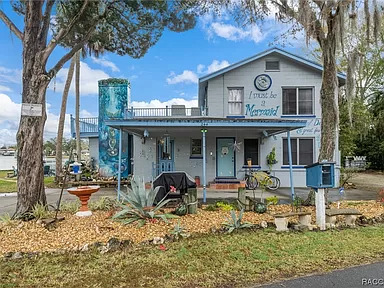
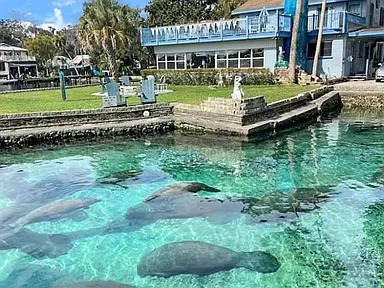
This house is crazy and I want it so bad! It comes with Manatees! The 1960 house in Crystal River, Florida has a spring that goes thru the property that's a Manatee rescue and refuge protected by the Dept. of Fish and Wildlife. It's currently being operated as a bed & breakfast, but it doesn't have to be. 5bds, 5ba, and all the cool furnishings stay! $3.3M - it's pricey, but Manatees! Look at them all, right in the yard.
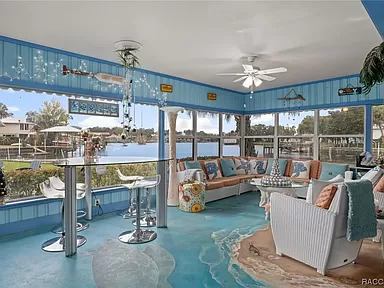


Bear in mind that all this great stuff conveys and look at the painted floor.
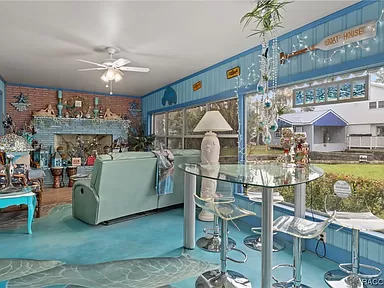
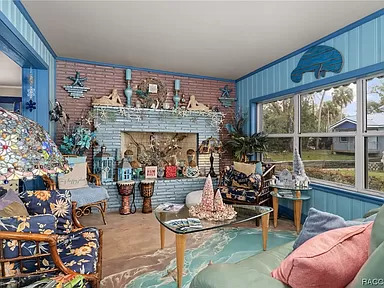
Check it out, a blue fireplace.
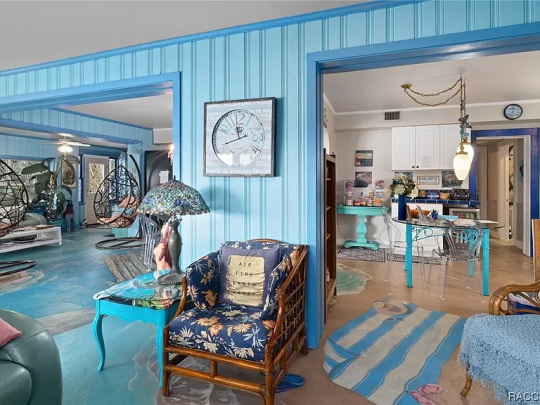


The kitchen's cute and it's quite large.

This is a main floor bedroom and look at the manatee mural. They even have manatee bedding.
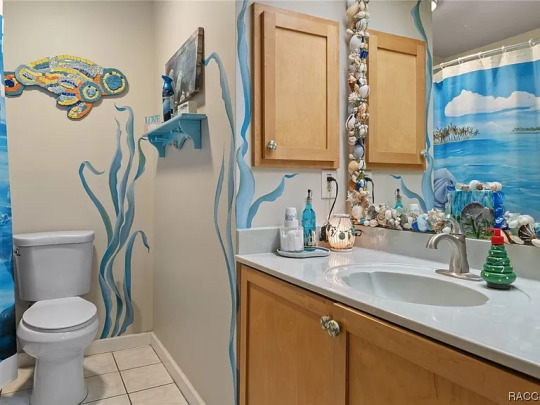
There's seaweed painted on this bathroom wall. The murals are professionally done.

The rest of the bedrooms and baths are on the 2nd floor.
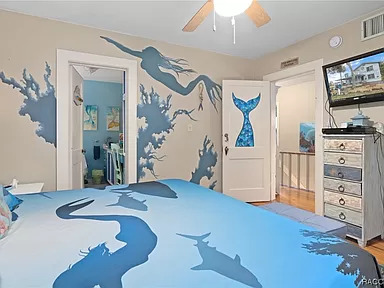
The upstairs bedrooms are just as cool. This is so pretty and it has bedding to match.

The en-suite.


The owners really went all out with the decor.

Small pirate bedroom is adorable for a child.
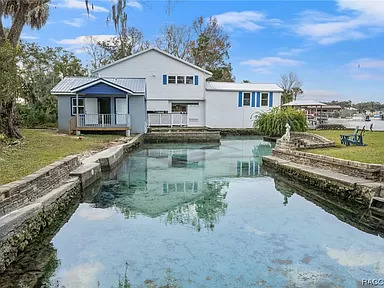
This is another residence on the property and could be a guest house or caretaker's house.
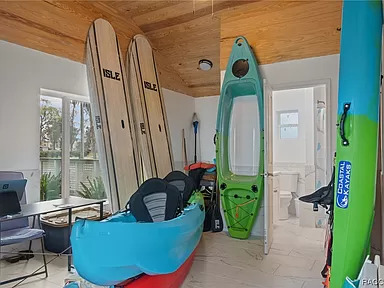
It's currently used as storage.
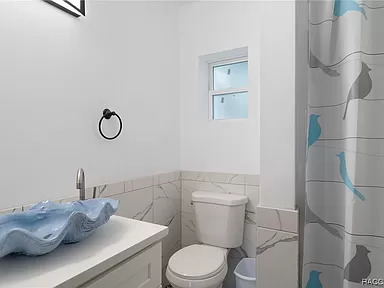
Has a nice bath- love the shell sink.
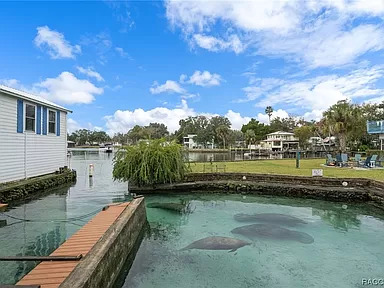
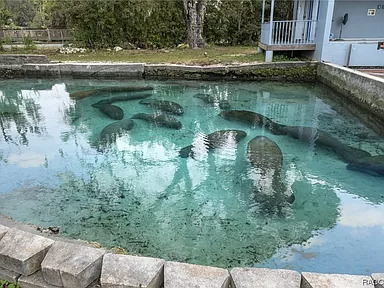
And, there they are, the manatees swimming by in the heated spring- the water temp stays around 72 degrees year-round.

Even the chimney on the fireplace has a mural and there's a roof top deck on the house.
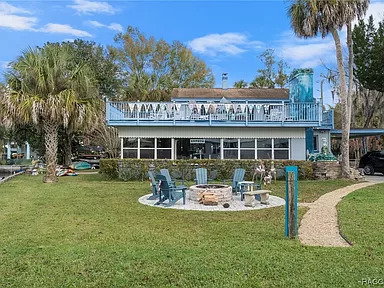
Seating around a fire pit.
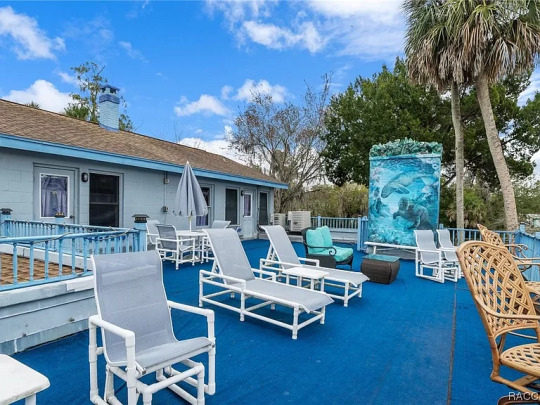

I thought that this was an outdoor fireplace, but I don't think it is.
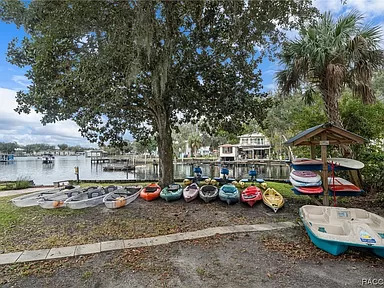
All of these boats convey so guests can take them out on the river.
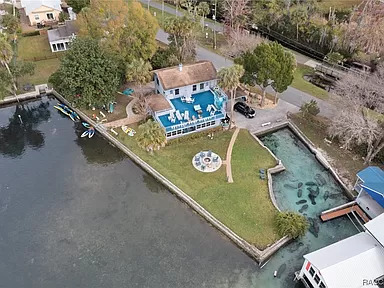
The property is .45 acre.
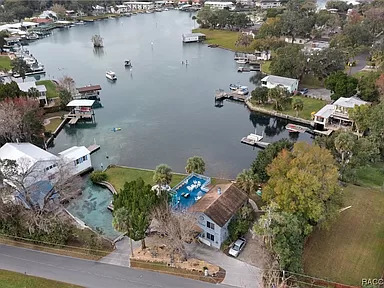
I would say that there are so many homes around that they're probably private residences, rather than bed & breakfasts.
https://www.zillow.com/homedetails/244-NE-2nd-Ct-Crystal-River-FL-34429/43637328_zpid/?
210 notes
·
View notes
Text
The Best News of Last Week
⚡ - Charging Towards a More Electrifying Future
1. The Kissimmee River has been brought back to life—and wildlife is thriving

The Kissimmee River in Florida was straightened in the 1960s, causing a sharp decline in wildlife and ecological problems. But in the 1990s, a $1 billion restoration project was initiated to restore the river's natural state.
Today, nearly half of the river has been restored, wetlands have been reestablished and rehydrated, and wildlife has returned, including rare and threatened species. Already the biological impact of the project has become clear. As the wetlands have come back, so have the birds.
2. Plastic wrap made from seaweed withstands heat and is compostable
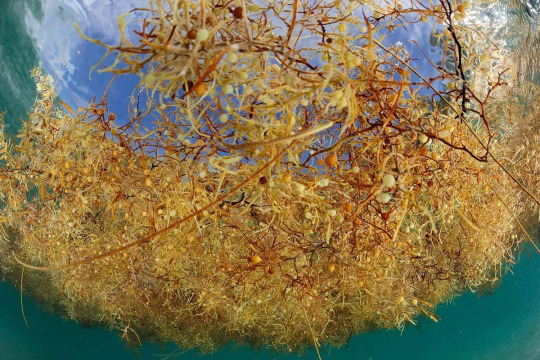
A cling film made from an invasive seaweed can withstand high temperatures yet is still easily compostable. The material could eventually become a sustainable choice for food packaging.
Scientists started with a brown seaweed called sargassum. Sargassum contains long, chain-like molecules similar to those that make up conventional plastic, which made it a good raw material. The researchers mixed it with some acids and salts to get a solution full of these molecules, then blended in chemicals that thickened it and made it more flexible and pliable.
3. An Eagle Who Adopted a Rock Becomes a Real Dad to Orphaned Eaglet

Murphy, a bald eagle that had been showing fatherly instincts, has been sharing an enclosure with an eaglet that survived a fall from a tree during a storm in Ste. Genevieve. Murphy, his rock gone by then, took his role as foster parent seriously. He soon began responding to the chick’s peeps, and protecting it.
And when, as a test, the keepers placed two plates of food in front of the birds — one containing food cut into pieces that the chick could eat by itself, and another with a whole fish that only Murphy could handle — the older bird tore up the fish and fed it to the eaglet.
4. World's largest battery maker announces major breakthrough in energy density

In one of the most significant battery breakthroughs in recent years, the world’s largest battery manufacturer CATL has announced a new “condensed” battery with 500 Wh/kg which it says will go into mass production this year.
“The launch of condensed batteries will usher in an era of universal electrification of sea, land and air transportation, open up more possibilities of the development of the industry, and promote the achieving of the global carbon neutrality goals at an earlier date,” the company said in a presentation at Auto Shanghai on Thursday.
This could be huge. Electric jets and cargo ships become very possible at this point.
5. Cat with '100% fatal' feline coronavirus saved by human Covid-19 medicine

A beloved household cat has made an “astonishing” recovery from a usually fatal illness, thanks to a drug made to treat Covid-19 in humans – and a quick-thinking vet.
Anya, the 7-year-old birman cat, was suffering from feline infectious peritonitis (FIP), a “100% fatal” viral infection caused by feline coronavirus. That was, until Auckland vet Dr Habin Choi intervened, giving Anya an antiviral used to treat Covid-19 called molnupiravir.
6. Kelp forests capture nearly 5 million tonnes of CO2 annually
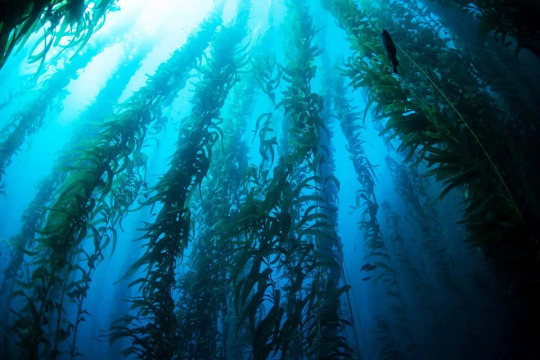
Kelp forests provide an estimated value of $500 billion to the world and capture 4.5 million tonnes of carbon dioxide from seawater each year. Most of kelp’s economic benefits come from creating habitat for fish and by sequestering nitrogen and phosphorus.
7. Medical Marijuana Improved Parkinson’s Disease Symptoms in 87% of Patients

Medical cannabis (MC) has recently garnered interest as a potential treatment for neurologic diseases, including Parkinson's disease (PD). 87% of patients were noted to exhibit an improvement in any PD symptom after starting medical cannabis. Symptoms with the highest incidence of improvement included cramping/dystonia, pain, spasticity, lack of appetite, dyskinesia, and tremor.
----
That's it for this week :)
This newsletter will always be free. If you liked this post you can support me with a small kofi donation:
Buy me a coffee ❤️
Also don’t forget to reblog
817 notes
·
View notes
Photo

Shorebirds in Marco are staking out nesting sites for the upcoming season, so it’s more important than ever to make sure to give them space and keep your dogs away from them - or better yet, off the beach completely, during this sensitive time. These nesting birds determine the fate of the next generation, and with 6 acres of nesting sites on the north end of Tigertail now gone due to irresponsible development, critical wildlife areas like Kice and Dickman’s will be that much more important. Enjoy the 10,000 islands, but do it in a way that people who come after you also have that opportunity 👍 #marcoisland #florida #nature #protection #doyourpart #walkthewalk #birds #conservation #beach #wildlife (at Kice Island) https://www.instagram.com/p/CpNywCyuuFt/?igshid=NGJjMDIxMWI=
2 notes
·
View notes
Text
Humans infecting animals infecting humans − from COVID-19 to bird flu, preventing pandemics requires protecting all species - Published Sept 4, 2024
I remember back in 2022, someone mocked me for worrying about zoonosis of new coivd strains. The science backs up my thoughts once again: We have to protect *everyone,* even critters, from disease to prevent future pandemics.
Authors Anna Fagre Veterinary Microbiologist and Wildlife Epidemiologist, Colorado State University
Sadie Jane Ryan Professor of Medical Geography, University of Florida
When the World Health Organization declared COVID-19 a pandemic on March 11, 2020, humans had been the only species with reported cases of the disease. While early genetic analyses pointed to horseshoe bats as the evolutionary hosts of SARS-CoV-2, the virus that causes COVID-19, no reports had yet surfaced indicating it could be transmitted from humans to other animal species.
Less than two weeks later, a report from Belgium marked the first infection in a domestic cat – presumably by its owner. Summer 2020 saw news of COVID-19 outbreaks and subsequent cullings in mink farms across Europe and fears of similar calls for culling in North America. Humans and other animals on and around mink farms tested positive, raising questions about the potential for a secondary wildlife reservoir of COVID-19. That is, the virus could infect and establish a transmission cycle in a different species than the one in which it originated.
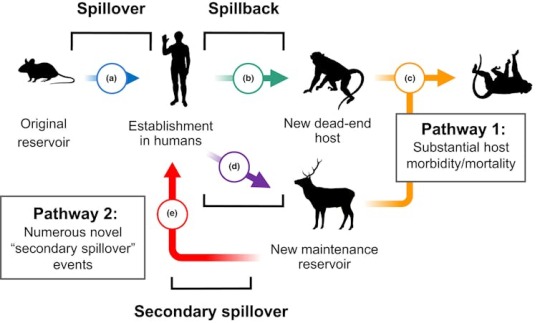
For example, spillback has been a long-standing threat to endangered great apes, even among populations with infrequent human contact. The chimpanzees of Gombe National Park, made famous by Jane Goodall’s work, have suffered outbreaks of measles and other respiratory diseases likely resulting from environmental persistence of pathogens spread by people living nearby or by ecotourists.
We are researchers who study the mechanisms driving cross-species disease transmission and how disease affects both wildlife conservation and people. Emerging outbreaks have underscored the importance of understanding how threats to wildlife health shape the emergence and spread of zoonotic pathogens. Our research suggests that looking at historical outbreaks can help predict and prevent the next pandemic.
Spillback has happened before Our research group wanted to assess how often spillback had been reported in the years leading up to the COVID-19 pandemic. A retrospective analysis not only allows us to identify specific trends or barriers in reporting spillback events but also helps us understand where new emergent threats are most likely.
We examined historical spillback events involving different groups of pathogens across the animal kingdom, accounting for variations in geography, methods and sample sizes. We synthesized scientific reports of spillback across nearly a century prior to the COVID-19 pandemic – from the 1920s to 2019 – which included diseases ranging from salmonella and intestinal parasites to human tuberculosis, influenza and polio.
We were also interested in determining whether detection and reporting bias might influence what’s known about human-to-animal pathogen transmission. Charismatic megafauna – often defined as larger mammals such as pandas, gorillas, elephants and whales that evoke emotion in people – tend to be overrepresented in wildlife epidemiology and conservation efforts. They receive more public attention and funding than smaller and less visible species.
Complicating this further are difficulties in monitoring wild populations of small animals, as they decompose quickly and are frequently scavenged by larger animals. This drastically reduces the time window during which researchers can investigate outbreaks and collect samples.
The results of our historical analysis support our suspicions that most reports described outbreaks in large charismatic megafauna. Many were captive, such as in zoos or rehabilitation centers, or semi-captive, such as well-studied great apes.
Despite the litany of papers published on new pathogens discovered in bats and rodents, the number of studies examining pathogens transmitted from humans to these animals was scant. However, small mammals occupying diverse ecological niches, including animals that live near human dwellings – such as deer mice, rats and skunks – may be more likely to not only share their pathogens with people but also to be infected by human pathogens.
COVID-19 and pandemic flu In our historical analysis of spillback prior to the COVID-19 pandemic, the only evidence we found supporting the establishment of a human pathogen in a wildlife population were two 2019 reports describing H1N1 infection in striped skunks. Like coronaviruses, influenza A viruses such as H1N1 are adept at switching hosts and can infect a broad range of species.
Unlike coronaviruses, however, their widespread transmission is facilitated by migratory waterfowl such as ducks and geese. Exactly how these skunks became infected with H1N1 and for how long remains unclear.
Shortly after we completed the analysis for our study, reports describing widespread COVID-19 infection of white-tailed deer throughout North America began surfacing in November 2021. In some areas, the prevalence of infection was as high as 80% despite little evidence of sickness in the deer.
This ubiquitous mammal has effectively become a secondary reservoir of COVID-19 in North America. Further, genetic evidence suggests that SARS-CoV-2 evolves three times faster in white-tailed deer than in humans, potentially increasing the risk of seeding new variants into humans and other animals. There is already evidence of deer-to-human transmission of a previously unseen variant of COVID-19.
There are over 30 million white-tailed deer in North America, many in agricultural and suburban areas. Surveillance efforts to monitor viral evolution in white-tailed deer can help identify emerging variants and further transmission from deer populations into people or domestic animals.
Investigations into related species revealed that the risk of spillback varies. For instance, white-tailed deer and mule deer are highly susceptible to COVID-19 in the lab, while elk are not.
H5N1 and the US dairy herd Since 2022, the spread of H5N1 has affected a broad range of avian and mammalian species around the globe – foxes, skunks, raccoons, opossums, polar bears, coyotes and seals, to name a few. Some of these populations are threatened or endangered, and aggressive surveillance efforts to monitor viral spread are ongoing.
Earlier this year, the U.S. Department of Agriculture reported the presence of H5N1 in the milk of dairy cows. Genetic analyses point to an introduction of the virus into cows as early as December 2023, probably in the Texas Panhandle. Since then, it has affected 178 livestock herds in 13 states as of August 2024.
How the virus got into dairy cow populations remains undetermined, but it was likely by migratory waterfowl infected with the virus. Efforts to delineate exactly how the virus moves among and between herds are underway, though it appears contaminated milking equipment rather than aerosol transmission, may be the culprit.
Given the ability of influenza A viruses such as avian flu to infect a broad range of species, it is critical that surveillance efforts target not only dairy cows but also animals living on or around affected farms. Monitoring high-risk areas for cross-species transmission, such as where livestock, wildlife and people interact, provides information not only about how widespread a disease is in a given population – in this case, dairy cows – but also allows researchers to identify susceptible species that come into contact with them.
To date, H5N1 has been detected in several animals found dead on affected dairy farms, including cats, birds and a raccoon. As of August 2024, four people in close contact with infected dairy cows have tested positive, one of whom developed respiratory symptoms. Other wildlife and domestic animal species are still at risk. Similar surveillance efforts are underway to monitor H5N1 transmission from poultry to humans.
Humans are only 1 part of the network The language often used to describe cross-species transmission fails to encapsulate its complexity and nuances. Given the number of species that have been infected with COVID-19 throughout the pandemic, many scientists have called for limiting the use of the terms spillover and spillback because they describe the transmission of pathogens to and from humans. This suggests that disease and its implications begin and end with humans.
Considering humans as one node in a large network of transmission possibilities can help researchers more effectively monitor COVID-19, H5N1 and other emerging zoonoses. This includes systems-thinking approaches such as One Health or Planetary Health that capture human interdependence with the health of the total environment.
#covid#mask up#pandemic#covid 19#wear a mask#coronavirus#sars cov 2#public health#still coviding#wear a respirator
50 notes
·
View notes